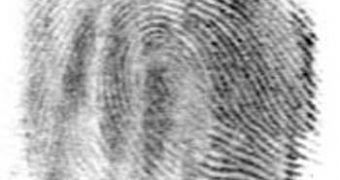The reason why people have ridges on their fingers – the formations that create fingerprints when they touch objects – has been a mystery to scientists for a long time, but one of their favored hypotheses was that they improved our grip when we tried to grab things. Now, a new study utterly disproves this theory, which means that researchers are again in the dark. A team from the University of Manchester has proven this in a series of scientific experiments it has conducted, with fingers on acrylic glass.
UM researcher Dr. Roland Ennos managed to create a measuring device able to determine the amount of friction that was created when a fingertip was pulled over acrylic glass. The results, published in the latest edition of the Journal of Experimental Biology, show that, when a student placed the machine on his finger, and then pulled on the glass, the amount of grip only increased very slightly, which is in direct contradiction with the existing theory.
The research also determined that skin didn't act like a solid, but more like rubber, as evidenced by the fact that the amount of grip increased if more of the finger was applied on the glass. This was established using wider or narrower pieces of acrylic. But the most important find was made when the team learned that the skin surface touching the glass was always 33 percent lower than it would have been if there were no ridges on our fingers, the BBC News reports. This means that, in fact, these ridges reduce the skin surface that comes into contact with objects.
The scientists concluded that, therefore, there couldn't be any correlation between the amount of grip fingers had and the presence of skin ridges on them. In some cases, Ennos said, the fingerprints actually seemed to be loosening the grip, which was totally contrary to the previously held theory. The researcher believes that these ridges may have evolved to allow skin to stretch without damage, or to allow water to drain from our fingertips, making for a more firm grip in wet conditions.

 14 DAY TRIAL //
14 DAY TRIAL //